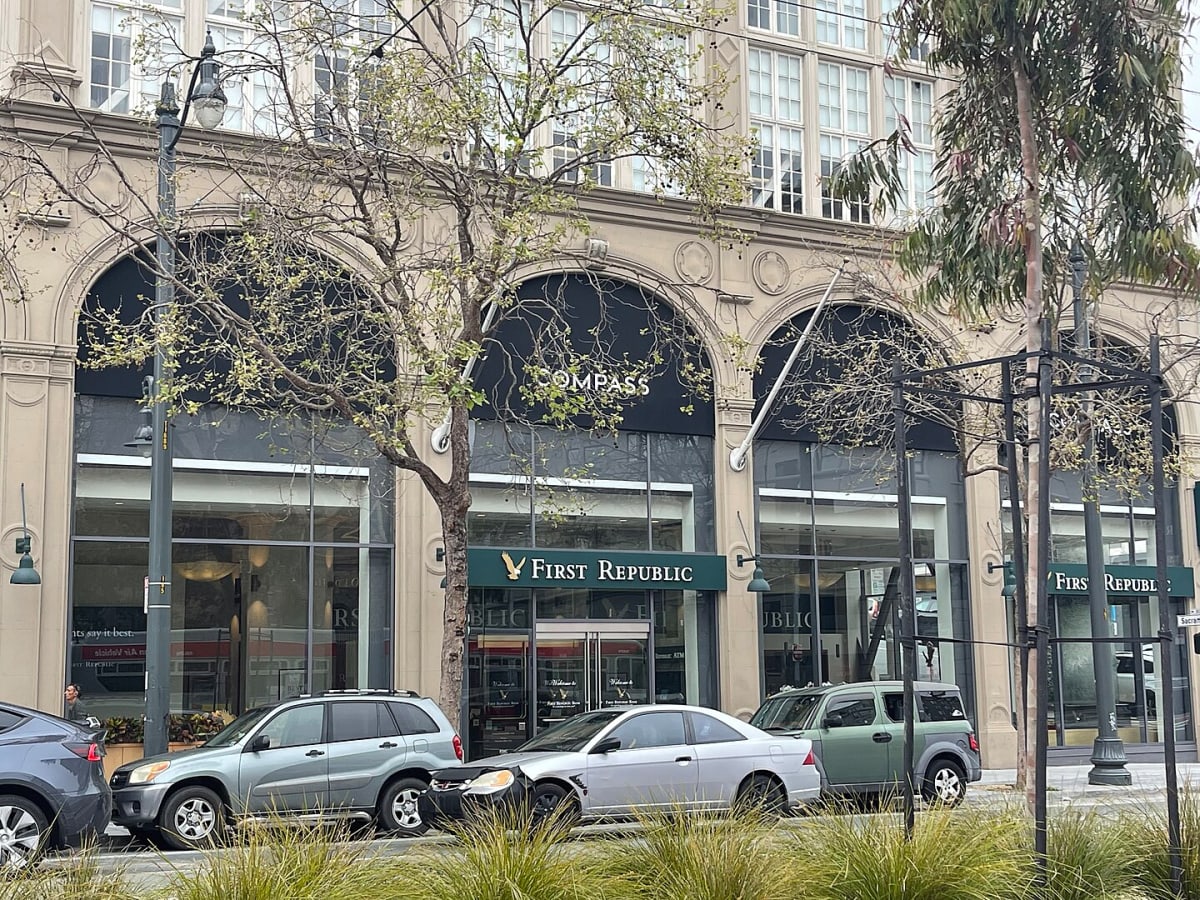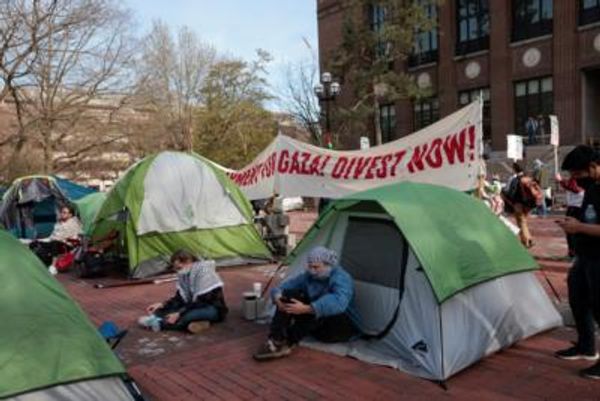
2023 may go down in the history books as the year America lost faith in its banks.
Over the course of a few weeks in the spring of 2023, multiple high-profile regional banks suddenly collapsed: Silicon Valley Bank (SVB), Signature Bank, and First Republic Bank. These banks weren’t limited to one geographic area, and there wasn’t one single reason behind their failures.
The news roiled the financial markets, pummeled the banking industry, and unsettled the public. Fears mounted that financial contagion was underway, which happens when a problem in one sector spreads to other areas of an economy, country, or region—with disastrous consequences.
But what exactly had happened to these banks? Why did they fail this year and not during the COVID-19 pandemic, when so many other businesses shuttered?
And perhaps the most important question of all is: Has the banking crisis of 2023 ended?
Why Do Banking Crises Happen?
Here’s the setup: Smaller banks have long been considered to be the backbone of America—with strong ties to their local communities, they have the boots-on-the-ground expertise Wall Street institutions and monoliths like JPMorgan Chase simply can’t offer. According to Goldman Sachs, small banks are responsible for 70% of all small business lending. Small businesses make up a critical component of U.S. GDP, comprising nearly half of the nation’s workforce.
Before the Federal Reserve Act, in the Wild West days of the U.S. financial system, states chartered banks, and they were limited to just one branch. It was a scene straight out of It’s a Wonderful Life: Every little town in America had a town hall, a church, and a bank.
By the 1920s, there were nearly 30,000 banks in America.
While a diversity of banking interests might seem like a good thing, restricting the size of a bank’s operations caused limitations—some of which we can still see today. For example, it’s simply more challenging for a small bank to diversify its loan portfolio, which makes it less equipped to handle sudden changes.
Back then, whenever a bank’s customers got spooked by new events or even mere rumors, they would run to their bank and demand their deposits back, thus coining the term bank run.
These actions would drain the bank’s reserves, forcing them to sell at firesale prices. A bank run is like a self-fulfilling prophecy: When its customers simultaneously demand their deposits, they cause the bank to become insolvent, which is another scene out of It’s a Wonderful Life.
In the early 20th century, things on Wall Street weren’t much better. Speculators took big risks and placed even bigger bets, routinely sparking trouble: The Knickerbocker Crisis of 1907 wiped out 50% of the market’s value in just three weeks, making it one of the country’s worst stock market crashes, second only to the Great Depression.
The formation of the Federal Reserve created a centralized banking authority that exerted much-needed regulation over the country’s financial institutions as well as on Wall Street. It also formed a structure for the flow of money—literally the printing of currency—as well as credit in the United States.
But today’s changes might be happening too quickly for America’s small banks to keep up.
Why Is There a Banking Crisis in 2023?
Subsequent to the onset of the COVID-19 pandemic, global supply chains became snarled, and wars erupted, both of which caused prices to soar. Inflation ran rampant between 2021 and 2023: Food, transportation, and utilities cost 20% more than they did, making even the smartest investment decisions small banks made during the longest bull market in history seem like anachronisms.
Here are a few reasons why:
Interest-Rate Risk
Treasury securities are considered to be one of the safest investments around. During the COVID-19 recession and its aftermath, many banking customers chose to sit on their government stimulus checks instead of taking out loans. As banks themselves are profit-seeking institutions, they were left with few options other than investing in Treasuries: According to JPMorgan Chase, banks invested $150 billion in these securities in a single quarter in 2021. The CARES Act might have spelled relief for consumers, but it actually hindered bank’s balance sheets since Treasuries yielded far less than the interest rates banks would have made on loans.
The situation became even harder for banks as inflation accelerated. As inflation neared double-digit levels in 2022, the Federal Reserve was forced to make a tough decision: Raise interest rates and thereby slow economic growth in order to stop prices from going out of control. But with every hike of the Fed funds rate, the long-term Treasury securities banks held lost value—this phenomenon is known as interest-rate risk. The Fed funds rate went up nine times in a row between March 2022 and May 2023, for a total of 5%. Smaller banks, in particular, suffered dearly.
Commercial Real Estate Woes
Commercial real estate loans make up more than a quarter of the average bank’s assets, and according to Fitch Ratings, many smaller banks have even greater exposure—up to one-third of their total portfolios.
Commercial real estate is defined as commercial spaces, such as office buildings, restaurants, or retail outlets, and when the economy is growing, investments in this sector typically see consistent and sizeable returns. Commercial real estate leases have long timeframes—usually upwards of five years—and they can offer high margins for desirable locations.
Mark Twain put it best when he said, “Buy land. They're not making it anymore."
But the COVID-19 pandemic cast a long shadow over the commercial real estate sector, as it sparked a massive transformation in how—and where—American businesses operated. As more and more workers clocked in from home, commercial real estate vacancies skyrocketed. The IMF concluded that a 5% increase in vacancy rates would lead to a 15% decrease in property values after 5 years—and during the pandemic, vacancy rates soared as high as 15%.
It’s no wonder the commercial real estate market is hurting today.
Even as the severity of the COVID-19 pandemic ebbs and more workers either fully return to the office or adopt hybrid work setups, rising interest rates only increase the likelihood of default for commercial real estate loans, compressing building valuations and lessening demand for new development.
Perhaps Mark Twain should have added: “Rising interest rates. They’re bad for everyone.”
Recessionary Pressures
The Fed promised to steer the economy towards a soft landing, which meant it would raise interest rates to the point where it could contain inflation, all while avoiding a recession.
And every day, a host of data is released detailing consumer price levels, job growth, and GDP numbers, which helps analysts gauge where the economy stands in its business cycle.
The chart of yields on U.S. Treasuries is often read like tea leaves that can predict the future. Normally, longer-term Treasuries offer higher yields than shorter-term Treasuries as a matter of risk and reward: The longer the loan an investor makes to the federal government, the greater their reward should be.
But sometimes the yields on longer-term Treasuries—specifically, the 10-year Treasury—flip, or invert against shorter-term Treasuries, like the 2-year Treasury. When the yield curve inverts, that means that investors are placing higher value on shorter-term government bonds, which spells waning confidence in the U.S. economy.
According to data from the St. Louis Federal Reserve, after the yield curve inverts, a recession looms anytime between 6 months and 3 years. Yields on the 10-Year note and 2-Yield note swapped directions on April 1, 2022.
Other indicators of recession include spikes in the Volatility Index, or VIX—usually a level above 20—stock market volatility, and rising unemployment numbers.
What Caused the Banking Crisis of 2023?
While rising interest rates, declining commercial property values, and a looming recession spell trouble for the entire banking sector, three banks went completely belly up in 2023—and they owed their problems to additional headwinds:
Silicon Valley Bank (SVB)
SVB declared insolvency on March 10, 2023. A California regional bank that dealt largely with tech startups and counted Airbnb, Cisco, and Roku among its customers, its failure depended largely on a bank run.
After the bank announced a $1.8 billion loss and credit downgrade in March 2023, its high-net-worth customers, many of whom had stashed millions of dollars in their checking accounts, withdrew $42 billion in a single day. Interest-rate risk on its long-term reserves had made it difficult for the bank to provide enough liquidity to satisfy these demands.
First Citizens Bank acquired the troubled bank on March 26, 2023, and all 17 of SVB’s banking branches have since reopened under that name.
Signature Bank
Less than 48 hours after SVB collapsed, federal regulators placed Signature Bank under the receivership of the Federal Deposit Insurance Corporation (FDIC). This bank, which was headquartered in New York City, had a specialized business that focused mainly on private real estate, private equity, and cryptocurrency.
It had been under investigation by the U.S. Justice Department over its failure to recognize unlawful activities surrounding Sam Bankman-Fried’s cryptocurrency exchange, FTX, which combusted in November 2022. New York Community Bancorp acquired Signature Bank on March 20, 2023, and all of Signature Bank’s branches now operate under its subsidiary, Flagstar Bank.
First Republic Bank
Not even a consortium of the country’s biggest banks could save First Republic Bank. The San-Francisco based bank, which catered to tech startups and also provided wealth management services, had a 111% loan-to-deposit ratio, which meant it simply gave out more money than it had.
First Republic also suffered from interest-rate risk and customer withdrawals. Seeing the smoke signals, JPMorgan Chase and 11 other big banks offered a $30 billion liquidity infusion as a way to shore up the fragile banking system, but First Republic didn’t last. It was ultimately seized by the FDIC on April 28, 2023, and would eventually be sold to JPMorgan Chase—all branches now operate under that brand.
How Did the Government Respond to the Banking Crisis of 2023?
The Fed’s response was multi-pronged: It provided emergency loans to banks currently in distress, but it also sought to help alleviate some of the sector-wide turmoil it had caused, namely by hinting that the rate hikes might soon be over.
Providing Emergency Aid Through the Bank Term Funding Program
After the failures of SVB and Signature Bank, Fed Chair Jerome Powell launched the Bank Term Funding Program, which was a new form of emergency credit available to eligible financial institutions. To be accepted into the program, a bank must pledge collateral that the Fed could purchase through its open market operations.
What’s novel about this program is just how generous its terms are. The securities offered as collateral are priced at par value, which is not their current, depressed market value but rather their original value.
The interest rate for the Bank Term Funding Program, which is published daily, is the one-year overnight index swap rate (OIS) plus 10 basis points. As of May 24, 2023, that rate was 5.05%.
Restoring Confidence in the Nation’s Banking System
Even though the FDIC insures deposits up to a maximum of $250,000, in the aftermath of the implosions at SVB and Signature Bank, Fed Chair Jerome Powell and U.S. Treasury Secretary Janet Yellen promised all customers of the failed bank would be “made whole,” which meant they would get all of their money back—even above the $250,000 insurance limit.
This action sought to reassure Americans that everyone’s money was safe at their local bank and always would be. President Biden said, “Because of the actions that our regulators have already taken, every American should feel confident that their deposits will be there if and when they need them.”
Taking Some Blame for the Fallout
Remarkably, when Fed Vice Chair for Supervision Michael Barr released the agency’s investigation into the failure at Silicon Valley Bank, he said that the Fed itself did not “take forceful enough action” to prevent the catastrophe. He also cited a lack of supervision of the distressed bank during the Trump Administration under former Fed Vice Chair for Supervision, Randal Quarles.
Additionally, the Trump-era rollbacks of the Dodd-Frank Act, which had implemented “stress testing” of small and mid-sized banks to identify systemic threats, had effectively served as smokescreens, obscuring the crises before they were too late to fix.
Finally, during the Federal Open Market Committee press conference on May 3, 2023, after the Fed raised the Fed funds rate by another 25 basis points to a range of 5.00 to 5.25%, Fed Chair Jerome Powell hinted that they might be finished with rate hikes. He pointed out how his press release no longer contained language about “anticipating further increases.” He then added that future policy decisions would be made on a “meeting-by-meeting basis.”
Is the Banking Crisis of 2023 Over?
Even if the Fed maintains the Fed funds rate at its current levels, the banking sector may not be out of the woods yet. Even a longtime REIT investor like Charlie Munger, Vice Chairman of Berkshire Hathaway, admits that “A lot of real estate isn’t so good any more. We have a lot of troubled office buildings, a lot of troubled shopping centers, a lot of troubled other properties. There’s a lot of agony out there.”
And there are rumblings that two more regional banks, PacWest and Western Alliance, may be the next to fall. Only time will tell what happens next.







